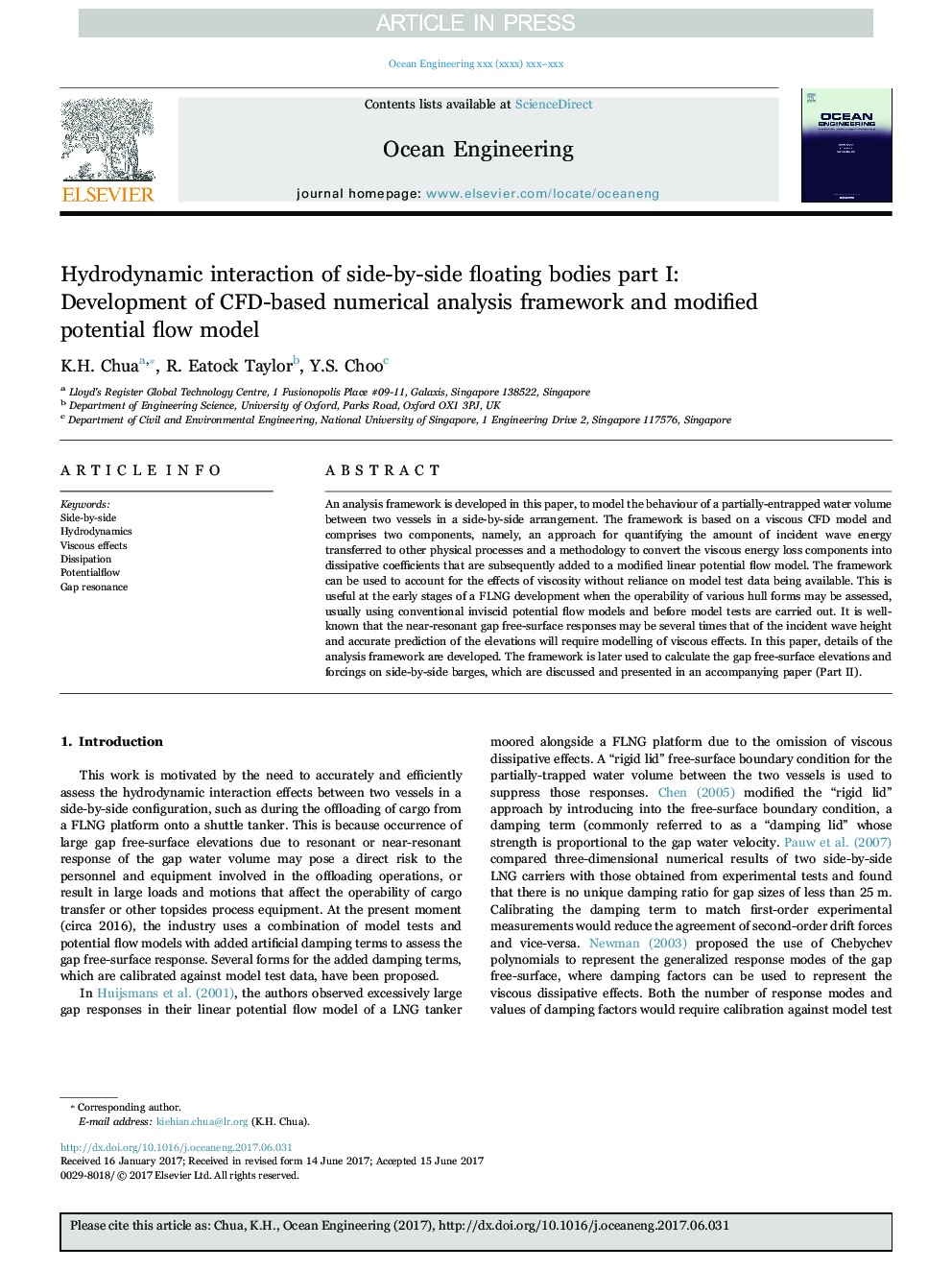| Article ID | Journal | Published Year | Pages | File Type |
|---|---|---|---|---|
| 11007314 | Ocean Engineering | 2018 | 12 Pages |
Abstract
An analysis framework is developed in this paper, to model the behaviour of a partially-entrapped water volume between two vessels in a side-by-side arrangement. The framework is based on a viscous CFD model and comprises two components, namely, an approach for quantifying the amount of incident wave energy transferred to other physical processes and a methodology to convert the viscous energy loss components into dissipative coefficients that are subsequently added to a modified linear potential flow model. The framework can be used to account for the effects of viscosity without reliance on model test data being available. This is useful at the early stages of a FLNG development when the operability of various hull forms may be assessed, usually using conventional inviscid potential flow models and before model tests are carried out. It is well-known that the near-resonant gap free-surface responses may be several times that of the incident wave height and accurate prediction of the elevations will require modelling of viscous effects. In this paper, details of the analysis framework are developed. The framework is later used to calculate the gap free-surface elevations and forcings on side-by-side barges, which are discussed and presented in an accompanying paper (Part II).
Related Topics
Physical Sciences and Engineering
Engineering
Ocean Engineering
Authors
K.H. Chua, R. Eatock Taylor, Y.S. Choo,
